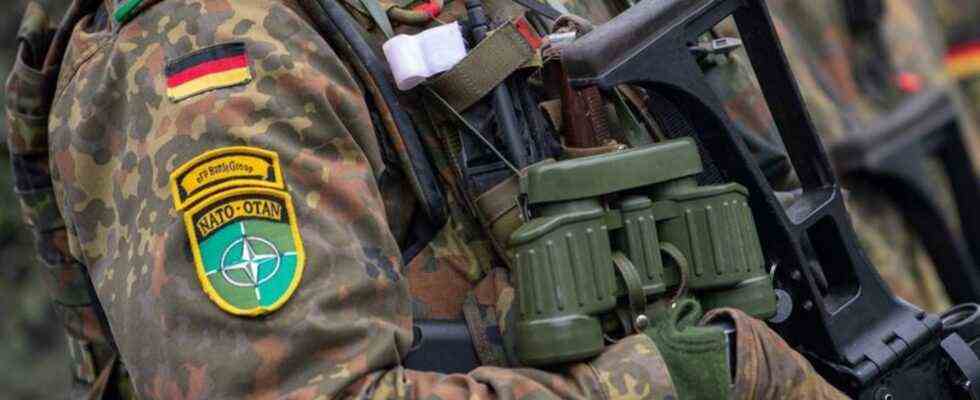military
Plans for a new EU reaction force are becoming more concrete
Enhanced Forward Presence (eFP) Battle Group soldiers in full gear. Photo: Monika Skolimowska / dpa
© dpa-infocom GmbH
The EU is to receive a new security policy concept in the coming year. The first draft is now available – and also addresses German demands for a new rapid reaction force.
The plans for a rapid EU military reaction force are becoming more concrete.
According to the draft for a new security policy concept of the European Union, its establishment could already be decided in the coming year and consist of up to 5000 soldiers. Depending on requirements, this should include air and naval forces in addition to ground troops.
It is a matter of having different “modules” that can be combined with one another, explained the EU Foreign Affairs Representative Josep Borrell about his plans presented to the EU Commission. It is not the troops that determine the deployment, but the deployment determines the troops. Different deployment scenarios could be, for example, intervening in an armed conflict, evacuating people or securing an airport.
Discussions about setting up a new reaction force have been going on in the EU for a long time. They were last fueled again by the military dependence on the USA during the evacuation mission in Afghanistan.
Afterwards, Germany, together with other EU countries, submitted a proposal to set up a reaction force. He intended to develop the already existing EU battle groups into powerful crisis reaction forces that could be deployed at short notice. To this end, space and cyber capabilities as well as special forces and strategic air transport capacities are to be provided.
Borrell has now taken up this idea. The new force is to consist of “substantially changed EU battlegroups” and other armed forces and capabilities of the member states, according to the draft that is available to “Welt” and the German press agency.
The previous EU battlegroup concept provides that two units with around 1500 soldiers each are kept ready at all times, which are made available every six months by different EU countries. Recently, however, there had been repeated problems in gathering enough troops. For example, there is currently only one battlegroup. The EU forces have never been deployed.
In any case, the new force should now be so strong that it could theoretically take on a military operation like that of the Americans to secure the airport in Kabul. After the Taliban came to power in mid-August, the United States made evacuation flights possible with around 6,000 US soldiers. Because of their departure, however, the Europeans then had to stop their rescue flights for people in need of protection earlier than actually desired.
Borrell’s draft for the EU’s new security policy concept is to be discussed next Monday at a joint meeting of the foreign and defense ministers of the EU states. It is also referred to as a “strategic compass” and is intended, among other things, to determine which capabilities the EU must have in the area of crisis management in the future. In the future, the EU must be much more than a “soft power”, commented Borrell.
The outgoing German Defense Minister Annegret Kramp-Karrenbauer described the strategic compass as a “key project” that goes back to a German initiative. “I am very proud that the defense department played a key role in shaping this process,” commented the CDU politician. She is sure that the new federal government will build on it accordingly.

